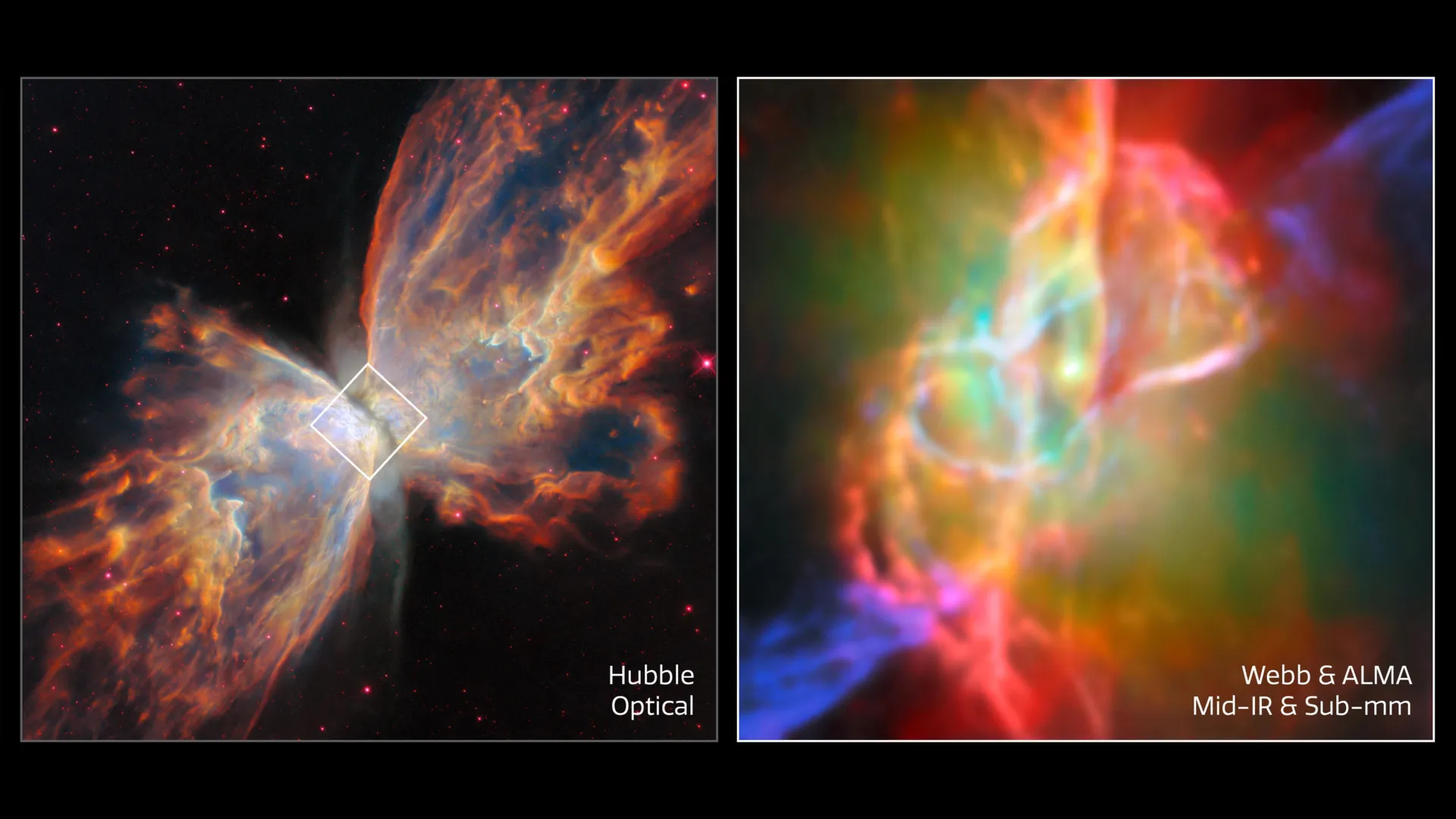Now Reading: Butterfly Nebula Unveils Celestial Gems and Life’s Building Blocks
-
01
Butterfly Nebula Unveils Celestial Gems and Life’s Building Blocks
Butterfly Nebula Unveils Celestial Gems and Life’s Building Blocks

Rapid Summary
- Researchers using the James webb Space Telescope studied cosmic dust within the Butterfly Nebula (NGC 6302), located 3,400 light-years away in Scorpius.
- The observations revealed details about how raw materials for rocky planets and life’s origins come together,marking a major advancement in the field.
- Cosmic dust was found to include both crystalline silicates (like quartz) and amorphous particles. Dust grains were unusually large for cosmic standards due to prolonged growth periods.
- Polycyclic aromatic hydrocarbons (PAHs), carbon-based molecules frequently enough linked to organic chemistry, were detected-this might potentially be their first known appearance in an oxygen-rich nebula.
- The Butterfly Nebula’s central star is among the galaxy’s hottest at 220,000 Kelvin. A dense torus of gas surrounds it and shapes its iconic butterfly-like lobes by directing outflowing gases asymmetrically.
- Nearly 200 spectral lines detailing atomic and molecular interactions were identified through advanced imaging techniques using Webb’s Mid-InfraRed Instrument (MIRI) and data from other observatories like ALMA.
- This research resolves long-standing questions about how planetary nebulae form structures that may contribute to creating habitable worlds.
Indian Opinion Analysis
The critically important findings from the Butterfly Nebula research highlight essential steps toward understanding planetary formation processes foundational to Earth-like environments.India’s growing interest in space exploration through projects like aditya-L1 or Chandrayaan demonstrates that such discoveries have implications beyond curiosity-they help shape humanity’s understanding of life’s origins on Earth.
India’s science community could benefit from collaborating with global initiatives involving telescopes like Webb while focusing on indigenous developments for exploring astrochemistry or exoplanets. Additionally, insights into complex molecules forming even under extreme conditions reaffirm why advancements in observation technology remain indispensable for pushing scientific boundaries.
Such breakthroughs underscore space exploration’s interconnected nature worldwide-an arena where shared knowledge fosters mutual scientific progress irrespective of borders.

























